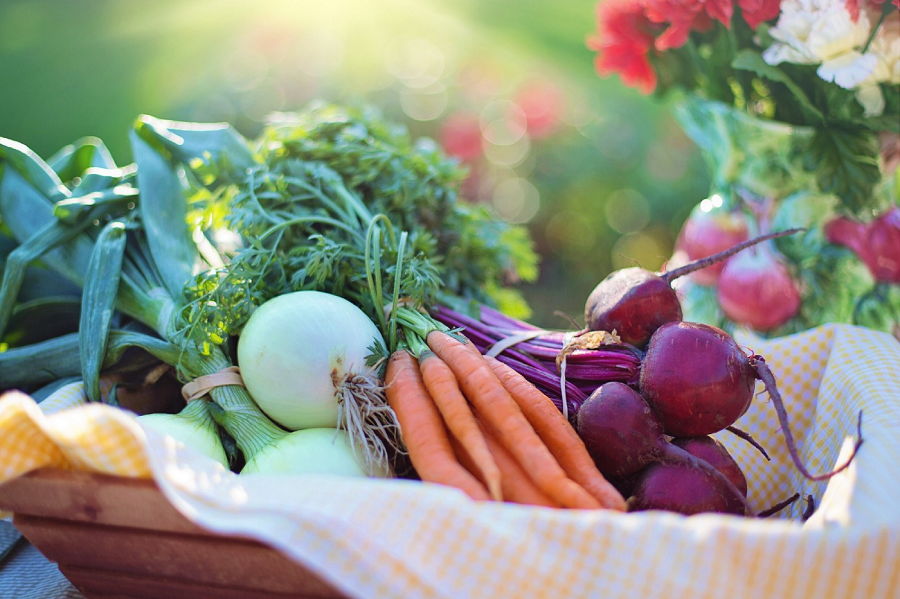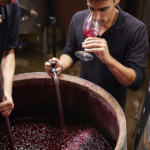Cabbage is a leafy vegetable that can be green, purple, red, or white. It grows in lettuce-like heads with densely packed leaves. Broccoli, brussels sprouts, cauliflower, kohlrabi, and collard greens are also members of the family. Cabbage has so many wonderful qualities! It’s healthy, inexpensive, and extremely versatile. It adapts well to a variety of cooking methods, including grilling and slow cooking.
Types of Cabbage
Cabbage comes in four varieties: green, red (or purple), Savoy, and Napa. They all have layers and layers of alternating leaves, each cupping the next, forming a firm, dense head — though the Savoy cabbage is a little looser, with more frill on the leaves.
Red or Purple Cabbage
A dense, smooth-leaved cabbage. It’s naturally crunchy and ready to use in raw salads. It’s also fantastic for slow braises and quick stir-fries. Red cabbage is typically harvested in late autumn. When you cook red cabbage, you’ll notice that it turns blue unless you use vinegar or another acid. Red cabbage contains more iron than green cabbage and also contains more vitamin A.
Green Cabbage
Green cabbages, like red cabbages, have smooth leaves and are widely available in supermarkets. Green cabbage has a crunchy texture and can be eaten raw or cooked.
Savoy Cabbage
The leaves are ruffled and curly, and the head is less densely packed. Savoy cabbage has a milder flavor than green or red cabbage.
Napa Cabbage
Napa cabbage is also known as Chinese cabbage. The term “Napa” has nothing to do with the wine country of California. It derives from a colloquial Japanese word, “Nappa,” which is a general term for “vegetable leaves,” not just cabbage leaves. The oblong shape distinguishes it from green and red cabbages. In addition, the somewhat wrinkly leaves are a very light green, tapering into a white stem. Napa cabbage is widely used in Asian cuisine, including Japanese, Korean, and Chinese dishes. It’s the cabbage of choice for Korean kimchi.
How to Purchase Cabbage?
Heads that are firm and heavy for their size but not overly large are ideal. Of course, the leaves should be free of blemishes and crisp, with a nice luster to them. Between November and April, look for fresh cabbages in grocery stores. Most cabbages are at their peak at that time.
How to Store Cabbage?
For about a month, store whole heads of cabbage in a plastic bag in the crisper of your refrigerator. A green or red cabbage can sometimes last up to 6 weeks. Green and red cabbages have the longest shelf life. Savoy cabbages are less durable, but they will keep for a few weeks. Leave the heads whole for the best results, and don’t wash or cut them until you’re ready to prep. Additionally, keeping cabbages chilled in the refrigerator helps them retain vitamin C.
Nutritional Values of Cabbage
Cabbage is a nutrient-dense, phytochemical-rich powerhouse that is high in fiber and high in vitamins C and K, as well as vitamin B6 and folate. Other compounds in cabbages may have antihistamine, anti-cancer, and anti-disease properties. Meanwhile, fermented cabbages, such as sauerkraut or kimchi, produce beneficial probiotics. To combat the scourge of scurvy, the Dutch and German navies sailed with barrels of vitamin C-rich sauerkraut. Historically, cabbage was thought to be a hangover cure by the Romans. And if you were Aristotle, musing in ancient Greece, and you accidentally ate a poisonous mushroom, you’d chug cabbage juice as an antidote.
How to Cook Cabbage?
Toss raw cabbage leaves into salads and slaws for a refreshing crunch and a punch of flavor. When cooked, cabbage’s flavor softens and it becomes more tender; it’s an excellent addition to stir-fries, soups, and stews.
Tips:
- When cooking red cabbage, add some vinegar or lemon juice to the cooking water to keep the color from running.
- Shredded cabbage can be used in place of lettuce to add a different flavor to your sandwich.
- To add color to the salad, mix in some red cabbage with the green cabbage.
- Instead of shredding the cabbage, cut it into wedges and steam until tender.
- When cooking cabbage, only 12 to 34 inch of water should be in the pan. If you use too much water, the color of the cabbage will fade, nutrients and flavor will be lost, and the cabbage will become soggy and limp.
- No acidic ingredients should be added to the water. Wait until the cabbage has finished cooking before seasoning it.
- Allow enough time in your planning for cabbage dishes/salads that are served cold to cool in the refrigerator for at least 1 hour.
- After the cabbage has finished steaming, top with melted butter, toasted nuts, minced onion, and celery.
Author Bio:
Hi, I’m Rana and I blog at ranasrecipe.com. My passion for food began very early in my life. And after managing a cafe, and a granola business, and helping other food businesses scale up, I found my true calling in creating wonderful recipes so that everyone can enjoy cooking as much as I do! Don’t forget to follow me on my social channels- Instagram and Pinterest.


















